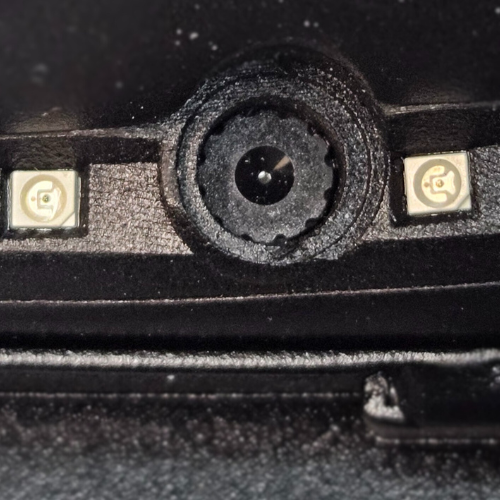VNG Eye – Videonystagmography Solution for Balance Disorders
- Karan Somawat
- Mar 17
- 4 min read
Updated: Jun 13
Introduction
VNG Eye is an advanced Videonystagmography (VNG) device designed to provide precise and reliable assessments of vestibular function. This article will explore what a VNG device is, how it works, and why the VNG Eye is a game-changer in the field of balance disorder diagnostics.

What is a VNG device?
A VNG device is a cutting-edge, computerized system that captures, records, and analyzes eye movements to assess vestibular function. It is a key diagnostic tool for evaluating dizziness and balance disorders, providing detailed insights into both central and peripheral pathways of the vestibular system. Let's see why videonystagmography devices are the perfect solution for balance disorders.
Key Functions of VNG devices:
Diagnosing vestibular ocular reflex issues
Evaluating oculomotor functions (saccades, smooth pursuit, gaze stabilization)
Detecting spontaneous and positional nystagmus
Performing tests like Caloric Test, Optokinetic Test, and Subjective Visual Vertical (SVV)
Assisting in diagnosing benign paroxysmal positional vertigo (BPPV)
VNG technology is vital in modern diagnostics, helping healthcare professionals detect underlying vestibular disorders and design effective treatment plans.
How Does a VNG device work?
VNG devices, including the VNG Eye, use infrared cameras, sensors, and analysis software to record and analyze eye movements. Since eye movements are directly linked to the vestibular system, any abnormalities can indicate an underlying balance disorder.
The Working Process of VNG Testing:
Infrared Cameras Track Eye Movements – High-frequency infrared cameras (60 FPS per eye) capture precise movements of both eyes (binocular testing for increased accuracy).
Specialized Test Protocols: Patients undergo multiple tests, such as saccades, smooth pursuit, caloric testing, and gaze tests, to assess different aspects of balance control.
Real-Time Analysis: Advanced pupil-tracking technology and mirrorless technology enhance diagnostic precision.
Remote Control Navigation & Secondary Monitor: Physicians can navigate tests seamlessly and monitor results efficiently.
Portable & User-Friendly Interface: VNG Eye enables anywhere diagnosis, allowing professionals to conduct tests in clinics, hospitals, or remote locations.
Key Features of VNG Eye
VNG Eye stands out as a leading solution in balance disorder diagnostics, offering state-of-the-art features that enhance accuracy, usability, and flexibility.
Comprehensive Balance Assessment with Multiple Test Protocols

Saccades & Smooth Pursuit Tests – Evaluates the ability of the eyes to track moving objects.
Optokinetic & Caloric Tests – Assesses the vestibular system’s response to movement and temperature changes.
Gaze Test & Nystagmus Detection – Identifies involuntary eye movements linked to vestibular dysfunction.
Positional Tests & Subjective Visual Vertical (SVV) – Helps diagnose BPPV and other positional balance disorders.
Advanced Technology for High Accuracy
High-Frequency (60 FPS per eye) Binocular Testing for superior precision.
Mirrorless Technology for distortion-free imaging.
Advanced Pupil Tracking Technology for intelligent interpretation.
Video Frenzel / Open Test capability for real-time observation.
User-Friendly & Portable Design

All-in-One Device: No external components needed.
Anywhere Diagnosis: Ideal for clinics, hospitals, and mobile diagnostics.
Remote Control Navigation & Secondary Monitor: Simplifies workflow for healthcare professionals.
Easy Interface & Intelligent Interpretation: Designed for efficiency and accuracy.
Seamless Control with the Air-Mouse Remote

VNG Eye comes with a wireless air-mouse remote controller, making navigation effortless during vestibular testing. Equipped with a Bluetooth adapter, this motion-controlled device allows clinicians to operate the software hands-free, ensuring a smoother workflow.

With intuitive cursor navigation, users can start and stop tests, adjust graphs, and interact with patient reports—all with a simple flick of the wrist. The ergonomic design ensures comfort during extended use, while its seamless integration with the HDMI setup enhances the testing experience.
By eliminating the need for constant keyboard or mouse interaction, the air-mouse remote enhances efficiency, allowing professionals to focus entirely on patient care.
The Importance of VNG Testing in Diagnosing Balance Disorders
VNG testing plays a critical role in diagnosing a wide range of vestibular disorders, enabling early detection and targeted treatment.
Common Balance Disorders Diagnosed with VNG
Benign Paroxysmal Positional Vertigo (BPPV) – A common cause of dizziness due to inner ear issues.
Vestibular Neuritis & Labyrinthitis – Inflammatory conditions affecting balance.
Meniere’s Disease – A chronic disorder causing vertigo, tinnitus, and hearing loss.
Cerebellar & Neurological Disorders – Conditions impacting motor control and balance.
By identifying these conditions early, VNG Eye helps physicians design personalized treatment plans that improve patient outcomes.
How VNG Eye Stands Out from the Competition
While many VNG machines are available, VNG Eye offers unique benefits that make it a preferred choice for healthcare professionals.
Cutting-Edge Technology & Accuracy

60 FPS per eye Binocular Testing for precise diagnostics.
Advanced Infrared Sensors for tracking the smallest eye movements.
Mirrorless Technology to prevent imaging distortions.
User-Centric Features
Portable Design: Lightweight and compact for flexible testing locations.
Secondary Monitor Support: Allows easy real-time test monitoring.
Remote Control Navigation: Enables seamless testing without interruptions.
Conclusion
VNG Eye is a revolutionary videonystagmography device designed to offer accurate, efficient, and user-friendly balance disorder diagnostics. With advanced technology, precise tracking capabilities, and intuitive design, it provides healthcare professionals with the tools they need to diagnose and treat vestibular disorders effectively.
By integrating high-speed binocular testing, mirrorless technology, and intelligent interpretation, VNG Eye ensures superior diagnostic accuracy while maintaining ease of use. Whether in clinics, hospitals, or remote diagnostic settings, its all-in-one portability makes it the ideal choice for balance disorder assessments.
If you’re looking for a cutting-edge VNG device that prioritizes accuracy, reliability, and innovation, VNG Eye is the solution. Contact us today to learn more or schedule a demo.


